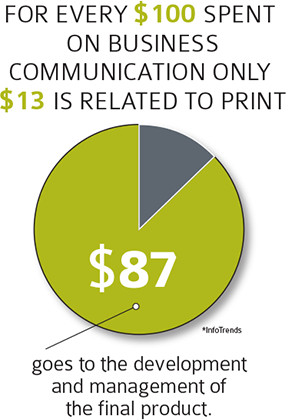Everybody wants to go green these days. Did you know that one of the easiest ways to do that is to switch to digital and 1:1 printing? When you produce targeted, personalized, and on-demand documents using digital presses, you are greening your print marketing at the same time.
First, when you print on demand, you are reducing your environmental footprint by eliminating waste. When inventory gets thrown away, whether because it goes out of date or becomes completely obsolete, you are not only wasting money, but you are wasting the environmental resources (consumables, chemicals, and energy to run the press) used to create those documents, as well.
Printed documents are not only printed, but they are shipped and warehoused. Transportation (shipping, postage) requires the consumption of fossil fuel and other environmental resources. When the documents are stored, those warehouses are air-conditioned. By switching to POD, you are reducing your environmental impact by reducing your shipping and warehousing requirements and the energy they require.
Second, targeting and personalization have positive consequences that green your print marketing, too.
- Databases used in 1:1 printing are generally cleaner and more up-to-date than traditional mailing lists, further reducing waste.
- Mailings are often targeted, as well as personalized. This reduces print volumes by targeting only a selection of the list and, in the case of booklets or kits, eliminating unnecessary pages.
- Personalization also allows co-mingling of documents. This not only increases the efficiency of delivery, but it can reduce the cost of the mailing.
We're used to looking at digital and 1:1 printing in terms of how they affect the bottom line, and rightly so. But many of those same applications have a green angle, too. Every time you cut costs through just-in-time production, targeting, and personalization, you shrink your environmental footprint at the same time.



